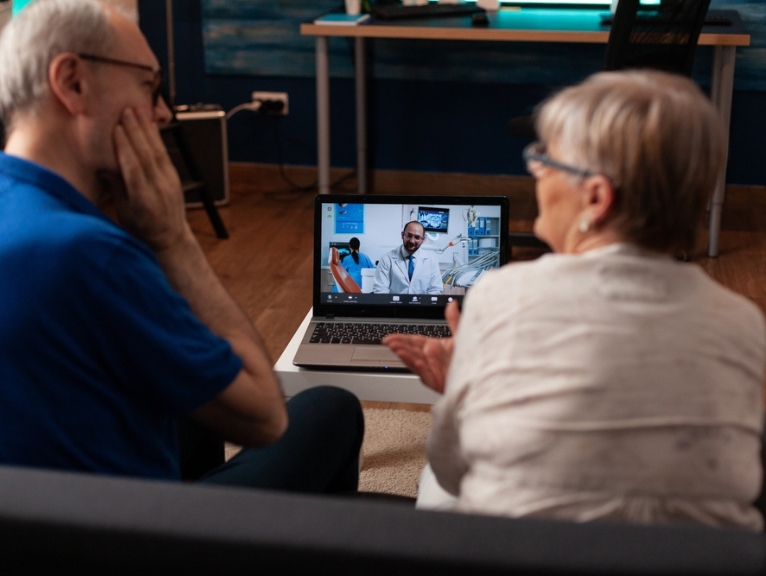
28th February 2024
The Rise of Teledentistry: Adapting Your Practice for Virtual Consultations
In a rapidly evolving digital age, the healthcare industry as a whole has seen a dramatic shift towards telehealth services. Among these, teledentistry is a prominent trend, revolutionising the way dental care is delivered. This innovative approach combines telecommunications with dental care, enabling dentists to consult, diagnose, and suggest specific care plans remotely.
The rise of teledentistry has been propelled by a myriad of factors, from advancements in technology to changing patient preferences for convenience and accessibility. As dental practitioners, it’s more important than ever to understand this shift and adapt your practices accordingly.
But what does it mean to adapt your practice with teledentistry? In essence, it involves leveraging technology to extend the reach of your dental services, breaking down geographical barriers, and offering flexible consultation options that cater to modern patients’ needs. The benefits, as we’ll discuss, are manifold, from improved patient satisfaction to increased efficiency and cost-effectiveness.

Understanding Teledentistry
Before we look further into the rise of teledentistry and explore how to adapt your practice for virtual consultations, it’s essential that we first understand what teledentistry is and why it’s gaining such rapid traction.
Teledentistry is a subset of telehealth.
Telehealth uses a range of technologies and telecommunications to provide healthcare services remotely. It enables dental professionals to consult with their patients, perform examinations, monitor oral health, and even carry out some treatments without the need for in-person visits. This is achieved through the use of digital imaging, video consultations, and secure electronic communications.
Teledentistry is here to stay.
This innovative approach gained significant attention during the COVID-19 pandemic, but it’s not just a temporary solution for lockdown-related restrictions. It’s a long-term strategy that’s reshaping the future of dentistry.
It responds to the growing demand for more accessible, flexible, and convenient healthcare services, fulfilling the needs of patients who may have mobility issues, live in remote areas, or simply lead busy lives.
Adapting your practice for virtual consultations is becoming increasingly important.
As more patients and consumers are becoming accustomed to the convenience of digital services, the appeal of visiting a dentist is reducing. Teledentistry offers an opportunity for forward-thinking dental practices to expand their patient base, improve efficiency, and stay competitive in a rapidly changing industry.
This allows the owners of the practice to pass this saving on to their customers and patients, making dental care more widespread to those on low incomes. Or, the additional flexibility and scale offered by teledentistry could enable practitioners to expand their service and increase their numbers of regular patients.
It can also enhance patient engagement and adherence to treatment plans. By enabling regular check-ins and accessible communication, it helps foster a stronger dentist-patient relationship, which is crucial for effective dental care.

How to Implement Teledentistry in Your Practice
As the demand for teledentistry continues to rise, dental practices must adapt and learn how to implement virtual consultations along with other aspects of this new innovation. This transition may seem daunting, but with a well-thought-out plan and the right resources, it can be a seamless integration.
Here’s our step-by-step guide on how to adapt your practice for teledentistry and implement virtual consultations:
1. Evaluate Your Needs and Capabilities
The first step in implementing teledentistry is to assess the needs of your practice as well as those of your patients or customers. What types of services can you realistically offer remotely? How tech-savvy are your patients? Understanding these factors will help you tailor your approach to virtual consultations.
2. Invest in the Right Technology
Next, you’ll need to invest in the necessary technology. This includes secure video conferencing software, digital imaging tools, and a reliable internet connection. Remember, patient privacy is paramount, so ensure all tools are compliant with data protection regulations.
3. Train Your Staff
Training is a critical component of implementing teledentistry in your practice. Ensure your team understands how to use the new tools and can assist patients with any technical difficulties.
4. Pilot a Test Run
Before launching fully, conduct a test run with a select group of willing patients. This allows you to identify any potential issues and make any necessary adjustments.
5. Market Your New Services
Once you’re ready to launch, let your patients know about your new virtual services. Use your website, social media, and email newsletters to spread the word.
6. Monitor and Adjust
Finally, continually monitor your virtual consultations and seek feedback from patients. This will allow you to make improvements and ensure your service is meeting the needs of your patients, customers and, crucially, staff.
By following these steps, you can successfully navigate the shift towards teledentistry. Remember, the goal is not to replace in-person visits entirely but to supplement your existing services with more flexible and accessible options.
Work with a Partner That Understands the Rise of Teledentistry
At Curran Dental, we pride ourselves on embracing innovation in the dental industry. From modern, patient-oriented design to high-tech digital solutions and equipment, we strive to provide our clients with the most up-to-date services possible.
So, if you’re considering a move towards teledentistry, we’d be happy to support you in adapting your practice to work with the latest in dental technology. Reach out to us today for more information – our dedicated team will be happy to help.










